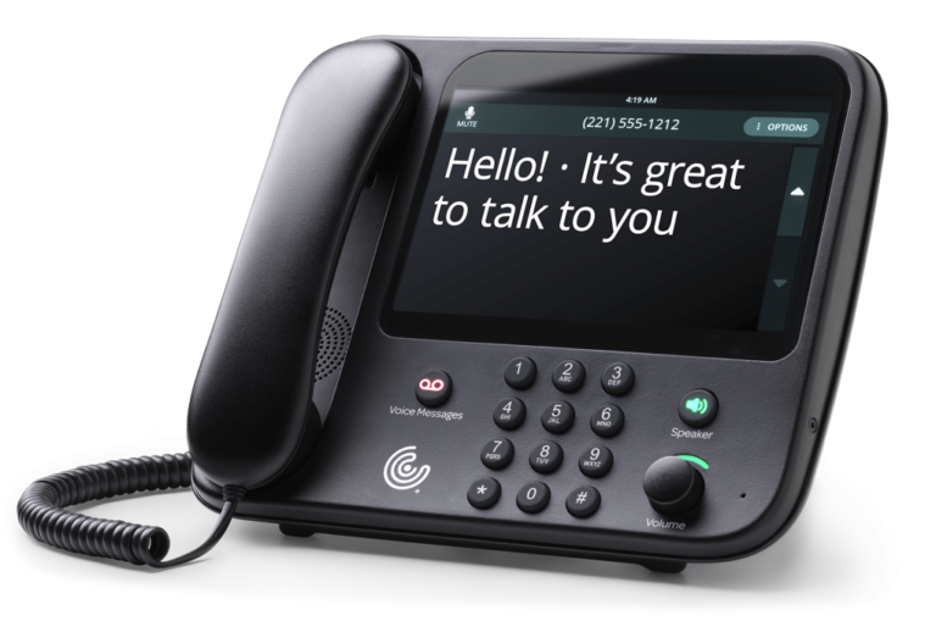
What Is Assistive Captioning and How Does It Help?
Assistive captioning, or closed captioning, is an assistive technology that transcribes speech or speech and sound into written text. Captioning includes:- Subtitles that translate spoken words to written content. Subtitles are common for translating one language into another.
- Closed captions that translate spoken words and contextual sounds and actions into written content. Closed captions are ideal for viewers who have very limited hearing or are Deaf.
- Call captioning that translates what a speaker says on a phone call into written content. Call captioning requires a phone designed to show captions on a screen or an app that can add captions to a call on a smart phone
- Improving perception, comprehension, and memory, even when there’s background noise.
- Helping them interpret sounds and speech more clearly and quickly.
- Helping them understand sounds and speech, sometimes even better than with the use of hearing aids.3
Studies have looked into how captions benefit adults with age-related hearing loss. Four of these studies showed how captions give adults with age-related hearing loss a way to overcome the challenges caused by struggling to hear.
Captions and Comprehension
In the one study, researchers asked participants to listen to a list of numbers. The first half of the list was presented without distracting background sounds. The second half was presented with background noise. After participants listened to both halves of the list, they were asked to repeat the entire list of numbers.
Researchers found that listeners tried so hard to hear the numbers said with background noise that most forgot the beginning of the list.4
This study showed that adults with age-related hearing loss can have a harder time understanding sounds with background noise. The conclusion was that background noise interferes with comprehension and memory. The findings present a strong argument for ensuring aging adults with hearing loss have access to tools, such as assistive captioning, to help them struggle less and better understand sound and speech.
Seeing and Hearing Are Key
Researchers in the second study had participants listen to sentences that varied in complexity. They found that older adults with hearing impairments struggled with comprehension and recall of sentences when spoken quickly, even though they accurately perceived what was said.5
The study shows that perception, comprehension, and memory of speech improve for adults with age-related hearing loss when they can see and hear what’s said.
Other studies show that even just a one decibel (dB) improvement in signal-to-noise ratio corresponds to a 10% increase comprehension and memory.3
The improvement in this second study equaled a speech-to-noise ratio improvement of as much as 15 dB, which led to a significant increase in comprehension and memory.
Words and Sounds Work Together
In a third study, researchers showed participants two videos with captions and sounds. In the first video, the captions and sounds matched. In the second video, the captions and sounds didn’t.
The results of the study determined that sounds and words (such as captions in a conversation) complement each other to help listeners understand sounds better and to hear sounds more clearly and quickly.6

The Benefits of Captions versus Hearing Aids
In the last study, researchers determined that real-time closed captioning of speech in television improves comprehension for adults with hearing loss. The study also showed that the benefits of captions outweigh the benefits of hearing aids. In fact, hearing aids provided no benefit to recognizing words when captioning was available.7 This study shows just how important captions are for hearing loss.Assistive Captioning for Phone Conversations
Call captioning, such as that provided by , provides advanced call captioning for phone calls. Assistive captioning for phone calls lets anyone with hearing loss necessitating call captioning better comprehend, remember, and actively participate in conversations, even when there’s background noise. Call captioning is also available at no cost.
- https://www.nidcd.nih.gov/health/statistics/quick-statistics-hearing
- https://jamanetwork.com/journals/jamaotolaryngology/article-abstract/2592954
- Text Captioning Buffers Against the Effects of Background Noise and Hearing Loss on Memory for Speech
- Rabbitt, P. M. (1968). Channel-capacity, intelligibility and immediate memory. Q J Exp Psychol, 20, 241–248.
- Wingfield, A., McCoy, S. L., Peelle, J. E., Tun, P. A., Cox, L. C. (2006). Effects of adult aging and hearing loss on comprehension of rapid speech varying in syntactic complexity. J Am Acad Audiol, 17, 487–497.
- Frost, R., & Katz, L. (1989). Orthographic depth and the interaction of visual and auditory processing in word recognition. Mem Cognit, 17,302–310.
- Gordon-Salant, S., & Callahan, J. S. (2009). The benefits of hearing aids and closed captioning for television viewing by older adults with hearing loss. Ear Hear, 30, 458–465.

